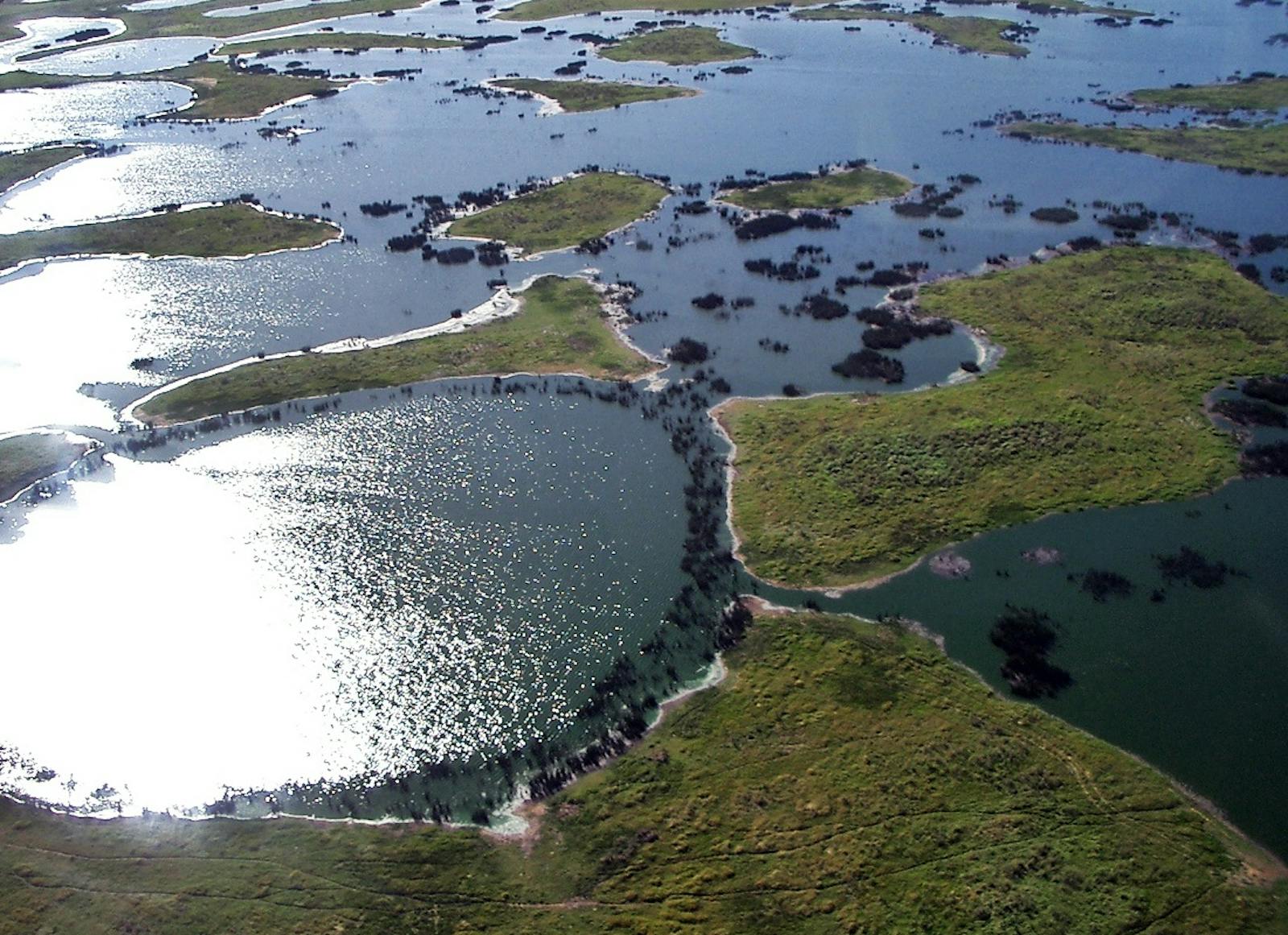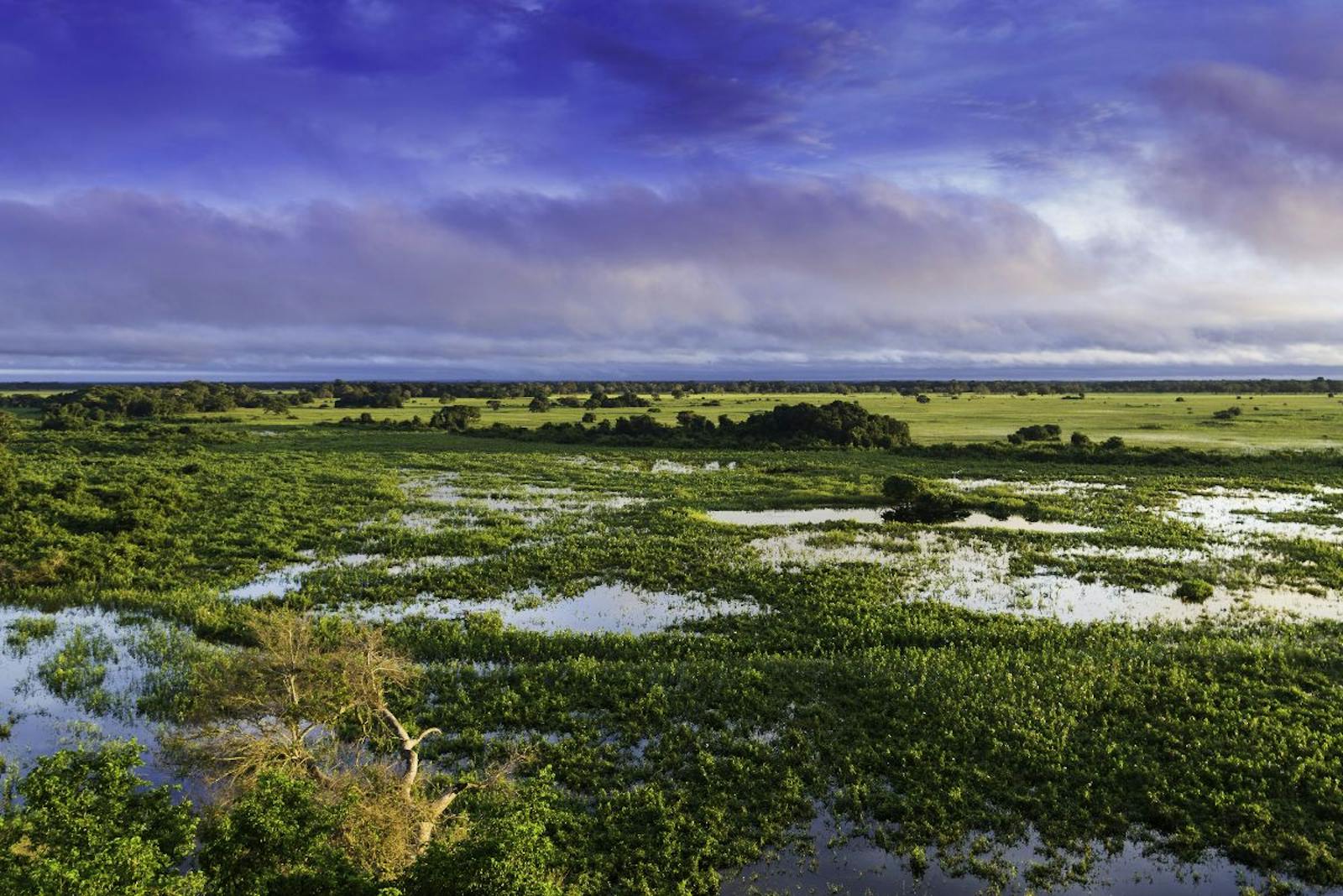Pantanal
The ecoregion’s land area is provided in units of 1,000 hectares. The conservation target is the Global Safety Net (GSN1) area for the given ecoregion. The protection level indicates the percentage of the GSN goal that is currently protected on a scale of 0-10. N/A means data is not available at this time.
Bioregion: Pantanal Flooded Grasslands & Dry Forests (NT12)
Realm: Southern America
Ecoregion Size (1000 ha):
17,143
Ecoregion ID:
584
Conservation Target:
80%
Protection Level:
2
States: Bolivia, Brazil, Paraguay
Jaguar are emblematic of the Pantanal ecoregion; individuals here reach their fullest size of the species, and because of the open habitat they are much more easily spotted in the wild. Jaguars have specialized jaws to prey on turtles, caiman, and other large reptiles, and they thrive in the seasonally flooded savannas and islands of forest.
The jaguar is also a keystone species, its diet patterns influence prey populations which in turn help shape the ecosystem around them. Most jaguar have orange and brown patterned fur with rosettes and spots of black, becoming white on their underside. However jaguar can also be “black”, or melanistic. These darker individuals retain the spotting patterns of the “normal” colored jaguar, just in shades of black and grey.
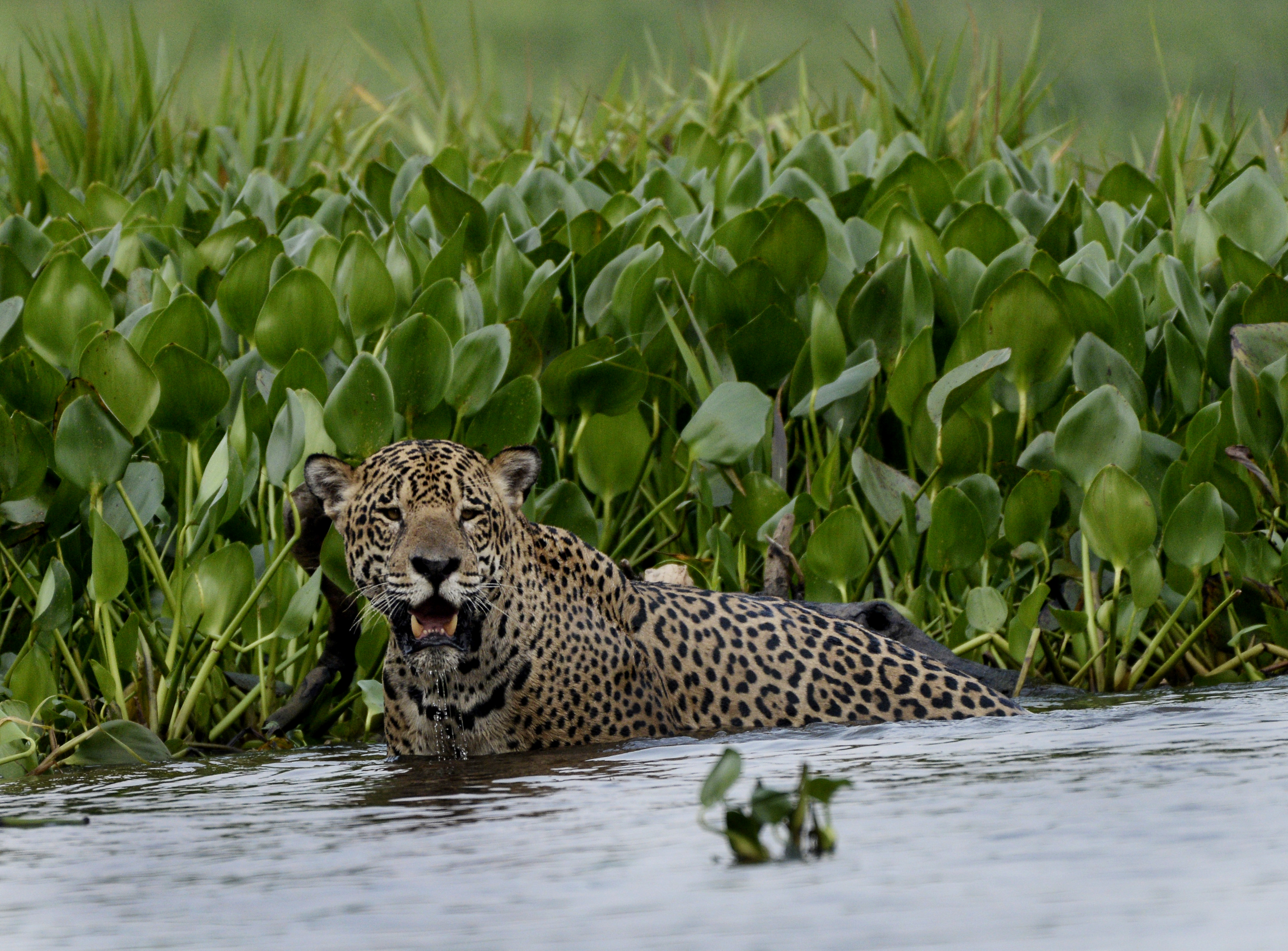
The flagship species of the Pantanal ecoregion is the jaguar. Image credit: Creative Commons
The Pantanal is the largest wetland in South America, and the largest wetland in the world that has not been substantially modified by humans. This ecoregion is located roughly in the center of South America, near the borders of Brazil, Bolivia, and Paraguay. The majority of the ecoregion occurs in Brazil as a floodplain around the Rio Paraguay and tributaries.
The terrain is essentially flat, ranging from 75–200 m. This elevation, coupled with the gentle slope of the rivers in the area, account for the massive flooding during the annual wet season when up to 78 % of the area can be submerged. The vegetation communities in this area are divided by small changes in topography that determines the frequency and duration of flooding they experience. The lowest areas have thousands of permanent and semi-permanent lakes, oxbows, and ponds ranging from a few meters to tens of kilometers in diameter. They are covered with diverse aquatic vegetation; floating species include common water hyacinth, eared watermoss, and water lettuce.

Marsh deer. Image credit: Creative Commons
Rooted plants near the shoreline include softstem bulrus and southern cattail. Vegetation in higher elevation range from scattered shrubs to savanna forest with almost complete tree cover. Finally semideciduous, deciduous, and gallery forests are found along rivers and on the highest ground where summer floods rarely reach.
Despite low levels of species endemism there is high diversity in the Pantanal ecoregion with over 400 plant, 500 moth and butterfly, 400 fish, 30 frogs, 80 reptile, 650 bird, and 75 mammal species. Many of the species are influenced by the extreme water fluctuations throughout the year. Adult and young fish enter the flooded areas during the wet season before returning to permanent rivers as the waters recede. There are three migration routes bringing birds to the Pantanal during either the wet or dry season depending on prey and area. Noteworthy animals include jaguar, giant otter, giant armadillo, marsh deer, pampas deer, and hyacinth macaw.
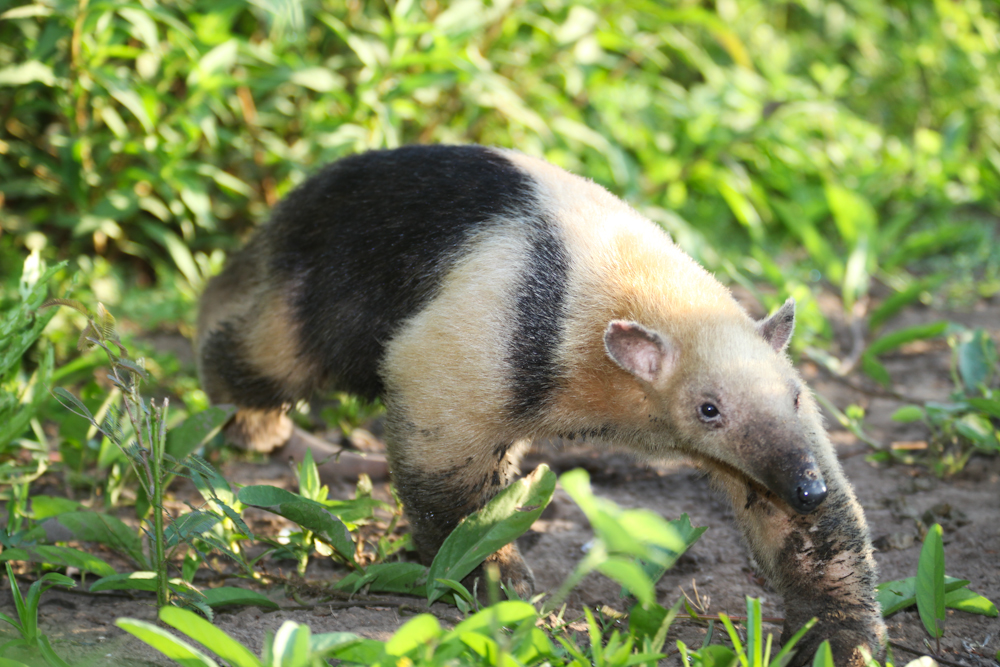
Tamandua. Image credit: Nori Almeida, Creative Commons
Most habitats of the Pantanal is in close to pristine condition. Only two dirt roads cross the area from the northern end near Cuiabá, and one road bisects the area between Campo Grande and Corumbá. Little of the area is formally protected, the majority is privately owned. The Pantanal National Park covers largely only flooded areas protecting little savannah or forest habitat.
The principle threats currently affecting the Pantanal are pesticide runoff from agricultural lands and gold
mining. Pesticides such as DDT, Parathion, and possibly Agent Orange have been used in great quantity within the Pantanal watershed. In 1996 there were over 700 gold-mining dredges operating in the area and the mercury used to separate out gold is now found at high levels in many fish populations. The greatest threat to the Pantanal is the Hidrovia project, a massive modification of the Rio Paraguay and Paraná Rivers to provide a navigable waterway for shipping, and dams for hydroelectricity generation. The original plans were rejected due to environmental consequences, but the debate continues.
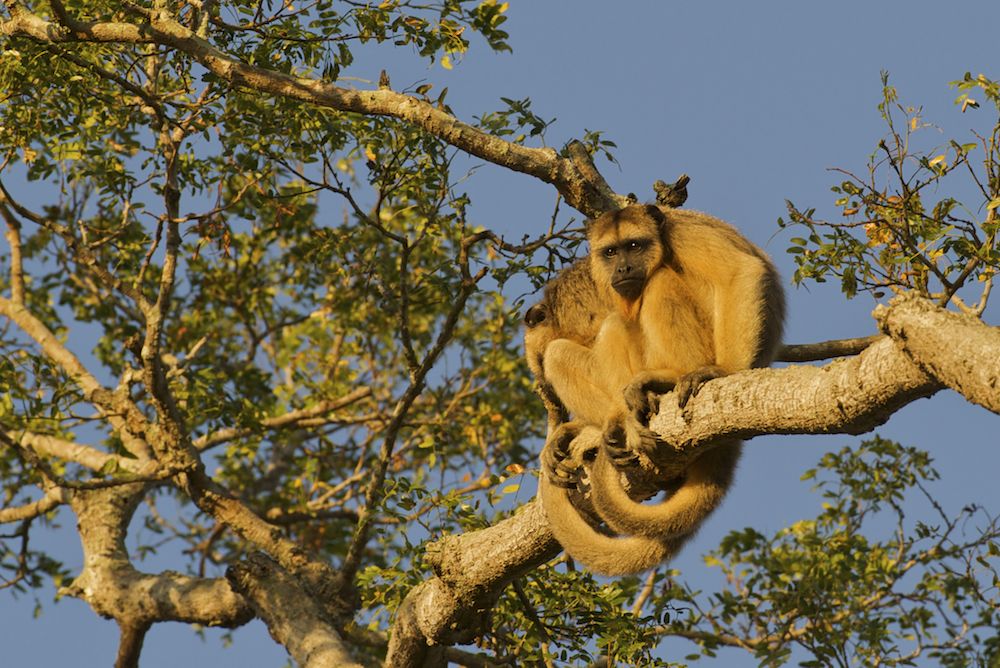
Black Howler, Pantanal. Image credit: Arturo de Frias Marques, Creative Commons
The priority conservation actions for the next decade are to: 1) reduce pesticide use with sustainable farming practices; 2) explore alternatives to the Hidrovia project to avert its potential environmental impact, or if still implemented to reduce impacts; and 3) increase protected area presence and variety within the ecoregion.
Citations
1. Male, T. 2018. Central South America: Southwestern Brazil, into Bolivia and Paraguay. https://www.worldwildlife.org/ecoregions/nt0907 Accessed September 13, 2018.
2. Por, F. D. 1995. The Pantanal of Mato Grasso (Brazil): World’s largest wetlands. The Kluwer Academic Publishers, Netherlands.
3. Antas, P de T. Z. 1994. Migration and other movements among the lower Parana River valley wetlands, Argentina, and the south Brazil/Pantanal wetlands. Bird Conservation International 4: 181-190.
